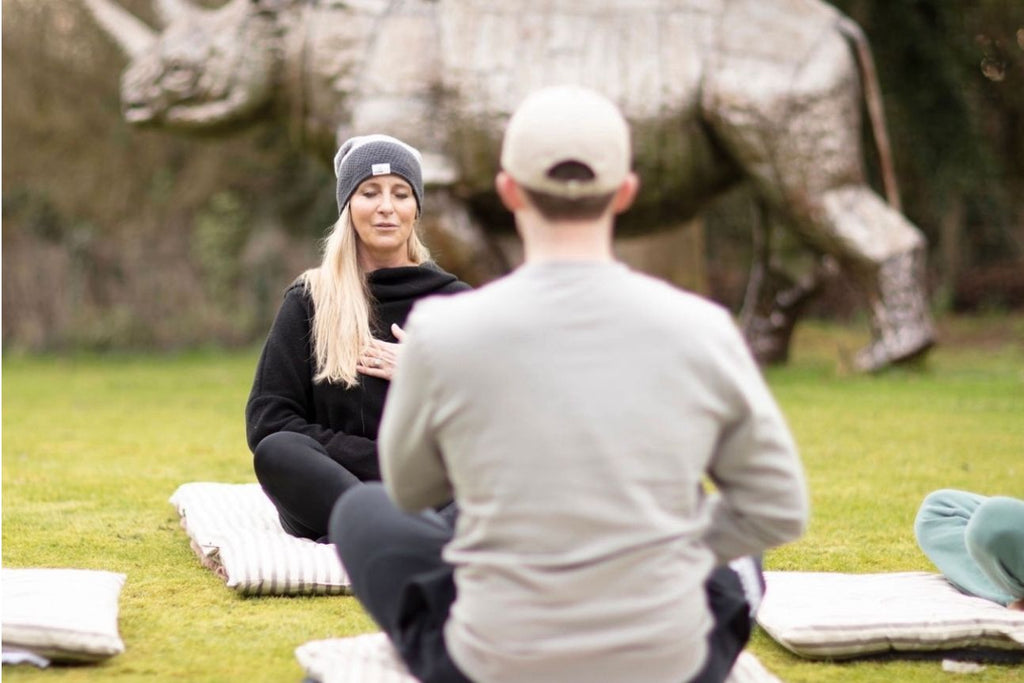Take a breath. Properly.

The bath is running.
In the madness of the modern world, a big step to more mindful self-care.
But…
When the water is running, what do you do?
No doubt, you’re thinking “I’ll just quickly do….” (unavoidable life admin).
True stillness and self-reconnection is as much in the preparation as the action itself. How often do you re-enter the bathroom and notice the scent…but in the moment when it counted most, you were distracted?
Push through the feelings of guilt that you “should be doing something else” or the need for stimulus to occupy your mind. Lean into the tranquillity.
We are working with Breathwork Therapist Anna Gough to support your wellbeing journey and help you restore your essential you, with practical and insightful techniques to optimise your mindfulness.
Talking to Anna is a series of “aha” moments. Full of insightful and approachable body-knowledge and self-care concentration techniques, Anna rightly points out that the main moments we tune into our own breathing is when we are in shock, anxious or exercising.
As children, we are biomechanically sound in our breathing. It is a subconscious thing that we do around 25000 times a day and at that point, we have not learnt to undo that intuitive biology. As we get older and life, stress, anxiety, trauma etc. take their toll on our wellness, so too we unlearn our breathing skill. We start to breathe more shallow breaths in as we hunch our shoulders, furrow our brows and rush.
Breathing is not just about taking that deep breath when we feel the tension rise or we suddenly realise we are not breathing in a balanced way…it is about tuning in holistically to our body and the reactivity that can arise from not breathing in the best way to ensure we are fully, deeply oxygenated.
You will need the emergency breaths less if your breathing is balanced all day. Many of our biological functions are out of our control, but with breathing, we have learnt the various ways to alter our breathing patterns to suit situation and need, which enables us to work with situations to control our physical responses – freediving for example is a perfect example of this. But in day to day, we can learn control techniques.
When we inhale more, our hearts speed up to move oxygen around the body to move muscles and stimulate reactivity. When we exhale slowly, it calms the systems and we focus.
Your lungs are lower than you think, they aren’t between your shoulder blades, yet that is where we often breathe from.
Ask yourself: do you wake-up each morning with dry lips and mouth? If yes, that probably indicates mouth breathing says Anna. She goes on to advise that your mouth is for talking, laughing and eating…NOT for breathing. Your nose should do the work.
“the nose is the silent warrior: the gatekeeper of our bodies, pharmacist to our minds, and weather vane to our emotions.”
― James Nestor, Breath: The New Science of a Lost Art
When you breathe correctly, you will see your stomach rise first, then your chest and then you will feel that swirl in the head as the oxygen saturates your body – Anna refers to that swirling feeling as clearing the mind dust.
Anna advises to practice following where your breath moves, how it enters your body and moves around, visualise it, identify how it feels and if you are experiencing discomfort or pain, try to visualise moving the breath to the site of discomfort.
With awareness, comes insight and ability to remedy. The answers lie in simplicity and stillness. Don’t avoid that quiet, relish the moments, giving permission to yourself to reconnect.
Anna has developed some uniquely guided breathwork techniques to use with our iconic Olverum Bath Oil to support you in mindful wellness rituals.
- Prepare – remove devices, stimuli and give yourself permission for the moment of quietude.
- Immerse – experience the scent, light shift and sounds of your environment.
- Breathe – bringing down your heartrate, restoring balance and clearing mental clutter.
For more insightful guidance, visit our Instagram Live with Anna here.



